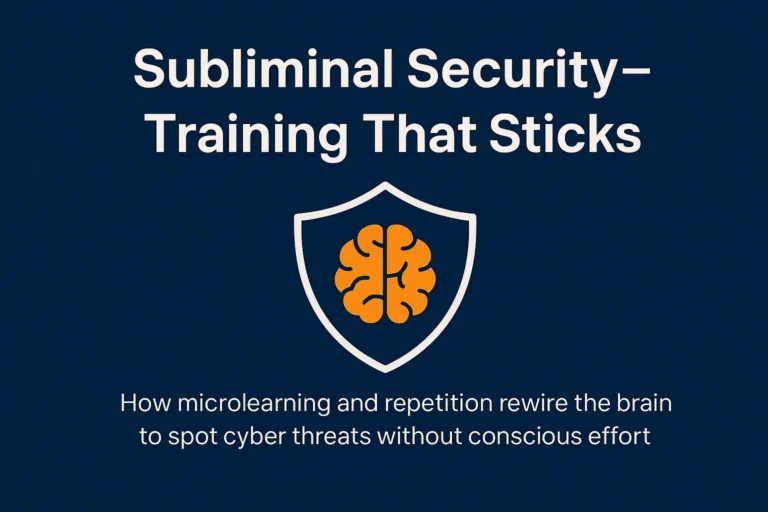In today’s interconnected world, where nearly every aspect of our lives is online, our digital credentials—usernames, passwords, and personal details—are some of our most valuable assets. Unfortunately, they are also among the most sought-after by cybercriminals. One of the most common methods attackers use to steal this information is through credential harvesting. But what exactly is it, how does it work, and most importantly, how can you protect yourself?
In this blog post, we’ll explore the concept of credential harvesting, the tactics cybercriminals use to obtain your sensitive information, and practical tips for keeping your credentials safe from hackers.
What is Credential Harvesting?
Credential harvesting is the process by which cybercriminals steal login information, often through deceptive tactics, and use it to gain unauthorized access to systems, accounts, and personal data. Unlike brute force attacks, which involve repeated attempts to guess a password, credential harvesting is more subtle and often depends on tricking the victim into willingly handing over their details.
Once attackers obtain these credentials, they can use them for a variety of malicious purposes:
Identity theft: Using your personal details to impersonate you online.
Account takeover: Gaining control over your online accounts, such as email, social media, or financial platforms.
Phishing campaigns: Using your contacts and credentials to further scam others.
Corporate espionage: Accessing sensitive business information for profit or sabotage.
Common Methods of Credential Harvesting
Credential harvesting can take many forms, but most involve some level of social engineering—manipulating individuals into divulging their credentials voluntarily. Here are the most prevalent methods used by attackers:
1. Phishing
Phishing is one of the most widespread tactics for credential harvesting. It involves tricking users into entering their login details on a fake website or application that looks legitimate. For example, an attacker may send an email that appears to come from a trusted source (such as your bank or employer) and prompt you to click a link. That link often leads to a fake login page designed to capture your username and password.
Spear-phishing: A more targeted form of phishing aimed at specific individuals or organizations. Attackers customize emails or messages to appear more credible, often referencing familiar information like your job title or recent interactions.
2. Man-in-the-Middle (MITM) Attacks
A Man-in-the-Middle attack occurs when a hacker intercepts communications between two parties, such as a user and a website. The attacker may create a fake Wi-Fi hotspot or compromise an existing network to intercept and steal credentials when the user logs into a website or application.
For example, if you connect to an unsecured public Wi-Fi network in a café, an attacker could be secretly monitoring the data you transmit, including usernames and passwords.
3. Keylogging
Keylogging involves the use of malware to track and record keystrokes made by a user. If a device is infected with a keylogger, the software will silently record everything you type, including sensitive information like passwords. Once the attacker has enough data, they can retrieve your login details and access your accounts.
4. Social Engineering
Social engineering is a psychological manipulation technique used by attackers to trick individuals into revealing their credentials. In addition to phishing, social engineering tactics might include phone calls or text messages pretending to be from a legitimate organization, asking you to confirm or reset your login details.
In one common scenario, the attacker may call you, posing as a customer service representative, and ask you to verify your identity by providing your password or answering security questions.
5. Malicious Attachments or Software
Cybercriminals may also use malicious software, often disguised as legitimate downloads or email attachments, to steal credentials. Once installed on your device, these programs can search for stored passwords or monitor your activity, including login attempts.
How to Protect Yourself from Credential Harvesting
While credential harvesting can be difficult to detect, there are several measures you can take to protect yourself and minimize the risk of falling victim to these tactics.
1. Enable Multi-Factor Authentication (MFA)
One of the most effective ways to protect your online accounts is to use multi-factor authentication (MFA). MFA requires you to provide two or more verification methods before logging in, such as entering a password and confirming a code sent to your mobile device. This extra layer of security ensures that even if an attacker obtains your password, they cannot access your account without the second factor.
2. Use Strong, Unique Passwords
A weak password makes it easier for attackers to compromise your accounts. Avoid using simple or commonly guessed passwords like “123456” or “password.” Instead, create complex, unique passwords for each account. Consider using a password manager to store and generate strong passwords automatically.
3. Be Cautious of Phishing Emails and Links
Always scrutinize emails and messages, especially those that request login information or personal details. Check the sender’s email address, hover over links to see the URL before clicking, and avoid downloading attachments unless you’re sure of their source. If you’re unsure, visit the website directly by typing the URL into your browser rather than clicking on links.
4. Update Your Software Regularly
Keeping your software up to date is crucial for patching security vulnerabilities. Outdated systems and applications can be more susceptible to malware attacks, such as keyloggers or MITM exploits. Enable automatic updates where possible to ensure you’re always protected.
5. Monitor Your Accounts for Suspicious Activity
Regularly checking your account activity can help you catch unauthorized access early. If you notice any unfamiliar logins or transactions, change your password immediately and contact the platform for support. Many online services also offer alerts for suspicious login attempts, which can help you respond quickly to potential threats.
Conclusion
Credential harvesting is a significant threat in today’s digital landscape, and cybercriminals are constantly developing new tactics to exploit unsuspecting users. By understanding how attackers steal login information and taking proactive steps to secure your credentials, you can greatly reduce your risk of falling victim to credential harvesting schemes. Always stay vigilant, practice good cybersecurity hygiene, and don’t underestimate the value of multi-factor authentication and strong, unique passwords.
By following these guidelines, you’ll be better equipped to safeguard your sensitive information and maintain control over your digital life.



